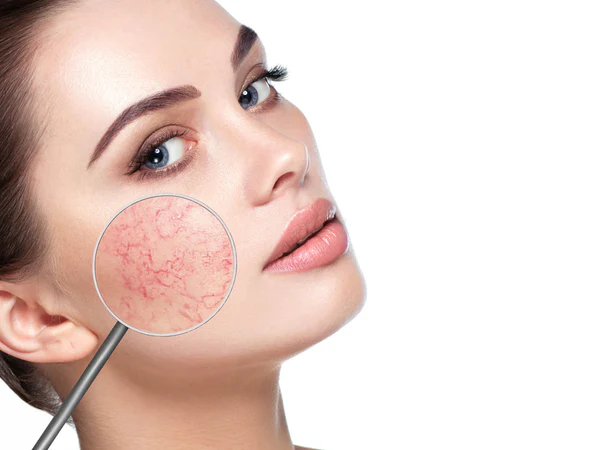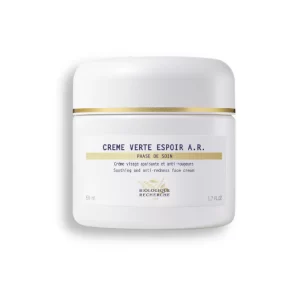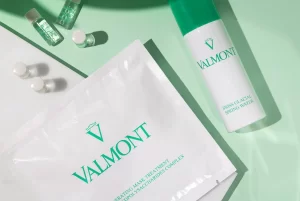Rosacea is a chronic inflammatory skin condition that primarily affects the central part of the face, including the cheeks, nose, chin, and forehead. This condition is more prevalent among women, especially those with fair skin, although it can affect anyone. Recognising the symptoms and understanding the triggers are essential steps towards effective management.

Rosacea manifests in various ways, but the most common symptoms include persistent facial redness, visible blood vessels, swelling, and skin thickening. Many individuals with rosacea also experience acne-like breakouts, which can further complicate the condition. Additionally, burning or stinging sensations often accompany the visible symptoms, adding to the discomfort.
Persistent redness, which looks like a permanent blush or sunburn, is a hallmark of rosacea. This redness is typically centralised on the face, affecting the cheeks, nose, chin, and forehead. Visible blood vessels, known as telangiectasia, often appear on the cheeks and nose, adding to the distinctive appearance of rosacea. In more advanced cases, the skin may thicken and swell, particularly around the nose, a condition known as rhinophyma. Acne-like breakouts, including papules and pustules, can also occur, making rosacea resemble acne. Finally, many sufferers report a burning or stinging sensation in the affected areas, which can be particularly distressing.
The exact cause of rosacea remains unknown, but several factors are believed to contribute to its development. These include abnormalities in the blood vessels of the face, which can lead to the persistent redness and visible blood vessels associated with the condition. There is also evidence suggesting that gut health may play a role, as imbalances in gut bacteria have been linked to rosacea. Genetic factors are also significant, as rosacea often runs in families, indicating a hereditary predisposition.
Various lifestyle factors can trigger or exacerbate rosacea symptoms. Sun exposure is a well-known trigger, as ultraviolet rays can aggravate the condition. Stress is another significant factor, with emotional stress leading to flare-ups. Diet plays a crucial role, with spicy foods, hot drinks, and alcohol commonly triggering symptoms. Extreme temperatures, whether hot or cold, can also provoke flare-ups, as can strenuous exercise, which causes the face to flush. Identifying and avoiding these triggers can help manage the condition more effectively.
Understanding the symptoms and triggers of rosacea is crucial for effective management. By recognising the signs and identifying personal triggers, individuals can take proactive steps to minimise flare-ups and maintain clearer, calmer skin.
Diagnosing rosacea accurately is essential for effective management and treatment. While self-diagnosis can provide initial insights, it is crucial to consult a skincare professional for a confirmed diagnosis and personalised treatment plan.
If you suspect you have rosacea, start by closely examining your skin. Look for persistent redness across your cheeks, nose, chin, and forehead. This redness often resembles a blush or sunburn that does not fade. Additionally, check for visible blood vessels, known as telangiectasia, particularly around your nose and cheeks. These appear as thin, red lines.
Another common characteristic of rosacea is the presence of acne-like breakouts. These papules and pustules can be mistaken for acne but are typically accompanied by the persistent redness typical of rosacea. If your skin feels hot and tender, or you experience burning or stinging sensations, these could also be indicative of rosacea.
Identifying and understanding your triggers is a critical step in managing rosacea. Common triggers include:
Ultraviolet rays can aggravate rosacea symptoms. Protect your skin with a broad-spectrum sunscreen and wear protective clothing when outdoors.
Emotional stress can lead to flare-ups. Practices such as mindfulness, yoga, and regular exercise can help manage stress levels.
Spicy foods, hot drinks, and alcohol are known to trigger rosacea. Keeping a food diary can help you identify and avoid dietary triggers.
Both hot and cold weather can provoke symptoms. Try to maintain a stable, moderate temperature environment and avoid hot baths or saunas.
Strenuous exercise that causes the face to flush can exacerbate symptoms. Opt for moderate exercise and stay hydrated to manage your condition better.
Managing rosacea requires a gentle and consistent skincare routine tailored to your skin’s specific needs. Incorporating the right products and practices can help soothe irritation, reduce redness, and prevent flare-ups. Here are the essential do’s for effective rosacea skincare.
Choosing the right cleanser is critical for those with rosacea-prone skin. Opt for gentle, fragrance-free cleansers specifically formulated for sensitive skin. Harsh ingredients such as sulfates and alcohol can strip the skin of its natural oils, exacerbating redness and irritation.
Proper hydration is essential for maintaining a healthy skin barrier and reducing irritation. Choose a fragrance-free, non-comedogenic moisturiser formulated for sensitive skin. Ingredients like hyaluronic acid, glycerin, and ceramides help maintain moisture levels and strengthen the skin barrier.
Sun exposure is a known trigger for rosacea flare-ups, making daily sun protection vital. Use a broad-spectrum sunscreen with an SPF of 30 or higher. Mineral sunscreens containing zinc oxide or titanium dioxide are less likely to cause irritation and provide effective protection against UV rays.
Certain ingredients can help calm and soothe rosacea-prone skin. Look for products containing niacinamide, green tea, chamomile, aloe vera, and colloidal oatmeal. These ingredients have anti-inflammatory properties and can reduce redness and irritation.
Before incorporating a new skincare product into your routine, perform a patch test to ensure it does not cause irritation. Apply a small amount of the product to a discreet area, such as the inside of your forearm, and wait 24 hours to see if any adverse reactions occur. If no reaction occurs, the product is likely safe for use on your face.
Maintaining a consistent skincare routine is crucial for managing rosacea. Stick to a simple routine that includes cleansing, moisturising, and protecting your skin from the sun. Consistency helps reinforce the skin barrier and reduces the likelihood of flare-ups.
By following these do’s, you can develop a skincare routine that effectively manages rosacea, minimising irritation and promoting healthier, calmer skin. In the next section, we will explore the practices and ingredients to avoid to prevent exacerbating rosacea symptoms.
While there are many beneficial practices to incorporate into your skincare routine, there are also certain practices and ingredients that should be avoided to prevent exacerbating rosacea symptoms. Here are the key don’ts to keep in mind.
Physical exfoliants, such as scrubs or brushes, can further irritate and inflame rosacea-prone skin. These products can damage the skin barrier and worsen redness and sensitivity. Instead, if you feel the need to exfoliate, opt for a gentle chemical exfoliant like a low-concentration AHA (alpha-hydroxy acid) or BHA (beta-hydroxy acid) product. However, be cautious and consult a skincare professional before introducing any exfoliant into your routine.
Certain ingredients are known to aggravate rosacea-prone skin. Avoid products containing alcohol, witch hazel, menthol, eucalyptus oil, peppermint, and fragrances. These can cause redness, stinging, and irritation.
When dealing with rosacea, it’s essential to keep your skincare routine simple. Using too many products or layering multiple active ingredients can cause irritation and worsen rosacea symptoms. Stick to the basics: cleanse, moisturise, and protect with sunscreen. Simplicity and consistency are key to managing rosacea effectively.
Regular visits to a dermatologist or skincare professional can help monitor and manage your rosacea symptoms. Professionals can provide personalised advice, prescribe medications, or recommend treatments to help control flare-ups. Skipping these appointments can lead to unmanaged symptoms and potential worsening of the condition.
Hot water can cause vasodilation, where blood vessels widen to release heat, leading to increased redness and irritation. Use lukewarm water when washing your face and avoid hot showers or baths. This helps prevent further irritation and keeps your skin calm.
Lifestyle factors play a significant role in managing rosacea. Be mindful of potential triggers such as stress, extreme temperatures, spicy foods, and alcohol, which can exacerbate rosacea symptoms. By identifying and avoiding your personal triggers, you can help reduce the frequency and severity of flare-ups.
Certain cosmetic procedures, such as microdermabrasion, chemical peels, and laser treatments, can aggravate rosacea-prone skin. Always consult with a dermatologist before undergoing any cosmetic procedure to ensure it is safe and appropriate for your skin condition.
By avoiding these don’ts, you can help prevent aggravating your rosacea and maintain healthier, calmer skin. The key to managing rosacea effectively lies in understanding what works for your skin and what doesn’t, allowing you to create a routine that supports your skin’s unique needs.
Selecting the right skincare products is crucial for managing rosacea effectively. Using products specifically formulated for sensitive and rosacea-prone skin can help reduce irritation, soothe inflammation, and improve overall skin health. Here are some top recommended products that are known for their effectiveness in managing rosacea symptoms.
This gentle, rich cleanser is ideal for rosacea-prone skin. It effectively removes makeup and impurities without causing irritation. The formula includes soothing ingredients like sweet almond oil that nourish and calm the skin while cleansing.
Esse Sensitive Mist is a probiotic mist designed to calm sensitive skin. It contains probiotic extracts and prebiotic nutrients that support the skin’s microbiome, improving hydration and reducing redness throughout the day.
This calming cream is specifically formulated for rosacea-affected skin. It utilises anti-redness glucosides, rice esters, and white tea leaf extract to reduce redness, strengthen the skin barrier, and provide soothing comfort.

This advanced facial mask is designed to soothe, soften, and strengthen stressed skin. It is infused with native Collagen derived for salmon roe which shield the skin from environmental damage and reduce inflammation.

Featuring scientifically advanced Vitamin C time-release technology combined with olive leaf extract and pure vitamins A & E, this serum delivers high levels of antioxidant protection and exceptional healing properties. It is ideal for rosacea, acne, and contact dermatitis.
Managing rosacea effectively goes beyond skincare routines. Incorporating specific lifestyle changes can significantly help in reducing flare-ups and maintaining healthier skin. Here are some essential lifestyle tips to consider.
Recognising and avoiding personal triggers is crucial for managing rosacea. Common triggers include sun exposure, stress, diet, extreme temperatures, and vigorous exercise. Keeping a diary to track your triggers can help you identify patterns and avoid activities or environments that exacerbate your symptoms.
Protecting your skin from the sun is vital. Wear a broad-spectrum sunscreen with an SPF of 30 or higher daily, even on cloudy days. Additionally, wear a wide-brimmed hat and seek shade when outdoors to minimise sun exposure.
Emotional stress can lead to rosacea flare-ups. Incorporate stress-reducing practices such as yoga, meditation, deep breathing exercises, and regular physical activity. These practices can help keep your stress levels in check, thereby reducing the likelihood of flare-ups.
Certain foods and drinks can trigger rosacea symptoms. Spicy foods, hot beverages, and alcohol are common culprits. Identifying and avoiding these dietary triggers can help manage your symptoms. Additionally, maintaining a balanced diet rich in fruits, vegetables, and omega-3 fatty acids can support overall skin health.
Both hot and cold weather can aggravate rosacea. During hot weather, stay cool by using fans, air conditioning, and cool compresses. In cold weather, protect your skin with a scarf and avoid hot showers. Gradually introduce temperature changes to avoid shocking your skin.
Keeping your skin and body well-hydrated is crucial. Drink plenty of water throughout the day to maintain hydration levels. Hydrated skin is less likely to become irritated and inflamed. Use a humidifier in your home, especially during dry winter months, to maintain moisture levels in the air and prevent your skin from drying out.
By incorporating gentle skincare routines, avoiding triggers, and seeking professional advice when necessary, you can effectively control flare-ups and maintain a healthy complexion. Remember, every step yo take towards understanding your skin is a step towards greater comfort and confidence. Take the time to listen to your skin, adjust your routine as needed and embrace the journey to healthier, calmer skin.
Should you find yourself in search of tailored advice to further fine-tune your regimen or if you wish to delve deeper into the science of the skin microbiome, our luxury skincare consultants are at your service. Engage with us through consultations, where we aspire to complement your choices with expert knowledge and personalised recommendations that resonate with your skin’s unique narrative.
Date:
21/12/2023
Category:
Article